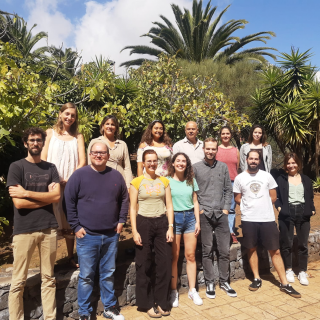Bibcode
Page, M. J.; Dwelly, T.; McHardy, I.; Seymour, N.; Mason, K. O.; Sharma, M.; Kennea, J. A.; Sasseen, T. P.; Rawlings, J. I.; Breeveld, A. A.; Ferreras, I.; Loaring, N. S.; Walton, D. J.; Symeonidis, M.
Bibliographical reference
Monthly Notices of the Royal Astronomical Society
Advertised on:
9
2021
Citations
12
Refereed citations
10
Description
We use ultraviolet (UV) imaging taken with the XMM-Newton Optical Monitor telescope (XMM-OM), covering 280 arcmin2 in the UVW1 band (λeff = 2910 Å) to measure rest-frame UV 1500-Å luminosity functions of galaxies with redshifts z between 0.6 and 1.2. The XMM-OM data are supplemented by a large body of optical and infrared imaging to provide photometric redshifts. The XMM-OM data have a significantly narrower point spread function (resulting in less source confusion) and simpler K-correction than the GALEX data previously employed in this redshift range. UV-bright active galactic nuclei are excluded to ensure that the luminosity functions relate directly to the star-forming galaxy population. Binned luminosity functions and parametric Schechter-function fits are derived in two redshift intervals: 0.6 < z < 0.8 and 0.8 < z < 1.2. We find that the luminosity function evolves such that the characteristic absolute magnitude M* is brighter for 0.8 < z < 1.2 than for 0.6 < z < 0.8.
Related projects

Traces of Galaxy Formation: Stellar populations, Dynamics and Morphology
We are a large, diverse, and very active research group aiming to provide a comprehensive picture for the formation of galaxies in the Universe. Rooted in detailed stellar population analysis, we are constantly exploring and developing new tools and ideas to understand how galaxies came to be what we now observe.
Anna
Ferré Mateu